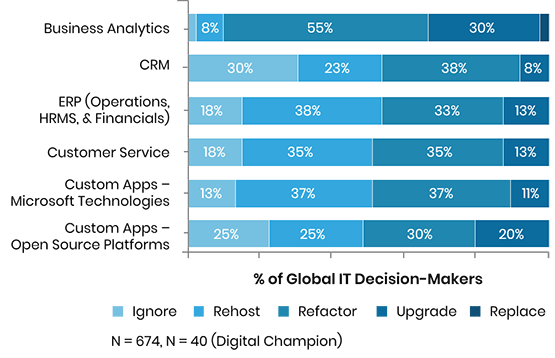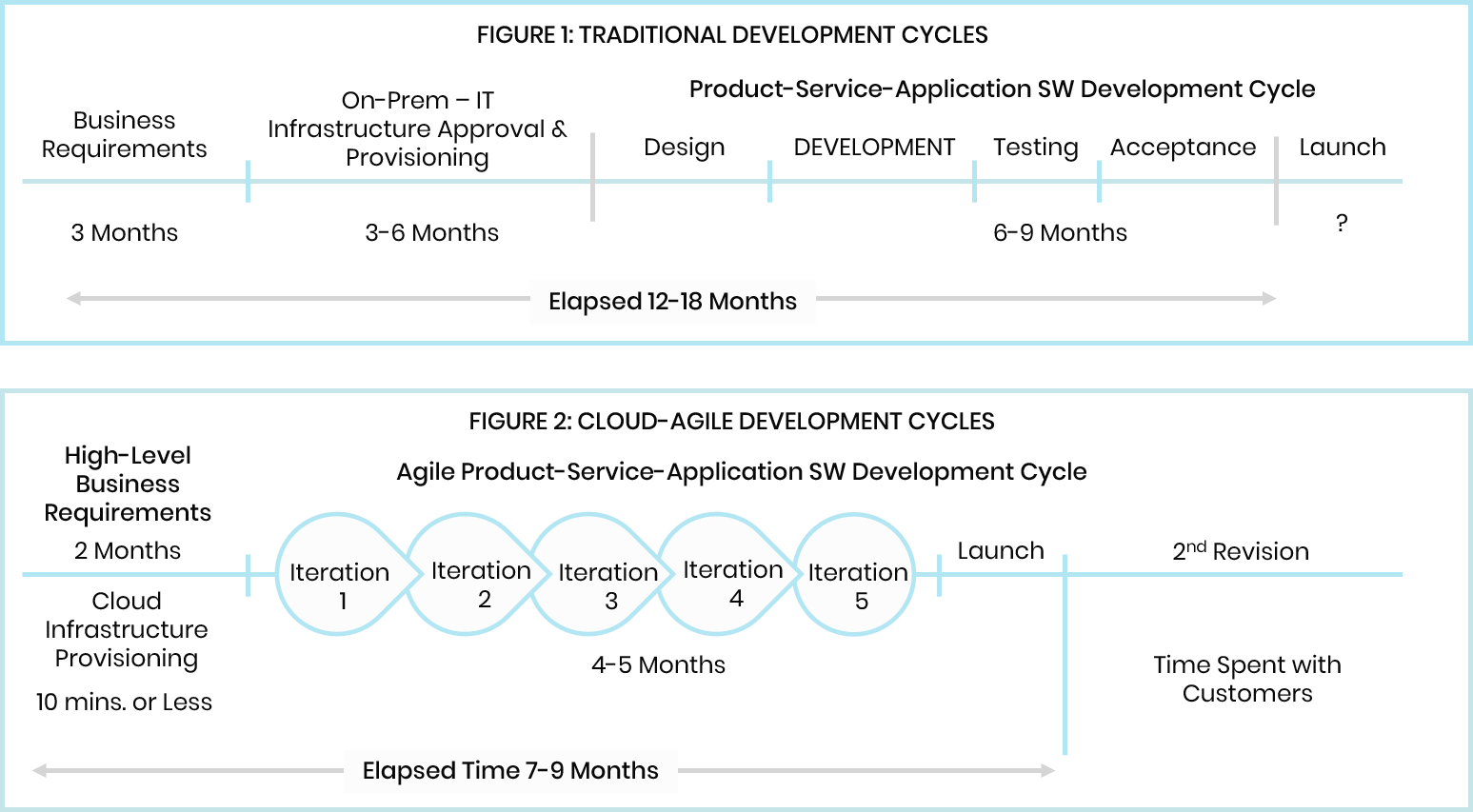What is a Cloud Application Strategy?
Getting a software development lifecycle aligned to a cloud-native application strategy allows companies to expedite their ability to design compelling new user experiences, keep business operations agile, and innovate at a rapid pace, all while reducing cost. That’s why in today’s economic reality – with increasing amounts of disruption, digital transformation, and new competitors lurking around every corner – a cloud-native application strategy is more critical than ever.
Cloud-native applications take advantage of the benefits of cloud computing: They replace the capital investment and resources required to run on premise development platforms and data centers with burstable computing, as well as on-demand and pay-as-you-go services.
The ability to instantly turn on and off development firepower without impacting existing functionality is accomplished by breaking down application components into smaller piece parts — called microservices—stitched together with APIs and cloud-native tools. For this to work, developers need to make sure the application design is decoupled from any physical infrastructure.


Why is a Cloud-Native Application Strategy Important?
Whether you’re looking at your existing portfolio of legacy applications or considering building something new, monolithic complexity is the Achilles heel of traditional application development. And users expect increasing functionality, innovative features, fast response times, and no downtime.
Performance problems, recurring errors, and delayed deployment are no longer acceptable, and if you’re in this situation, the competition will quickly carve out a chunk of your market segment. Cloud-native applications are defined by speed and agility, and they make it possible to immediately create new business models, products, or features.
While legacy monolithic applications can be a great starting point, they all have common problems that get bigger over time:
Resource vulnerability
As time passes, code changes hands many times, and the app becomes increasingly complicated, so no single developer or architect understands the architecture or code in its entirety.
Deployment issues
As the code base deteriorates, making changes to any part of the code has a very realistic chance of breaking the entire monolith, with unintended and costly side effects. Each release ends up being as small as possible and requires a risky deployment of the entire application.
Lack of innovation
With an ever-increasing risk of new additions potentially bringing down entire applications, the appetite for new features and innovation erodes quickly.




